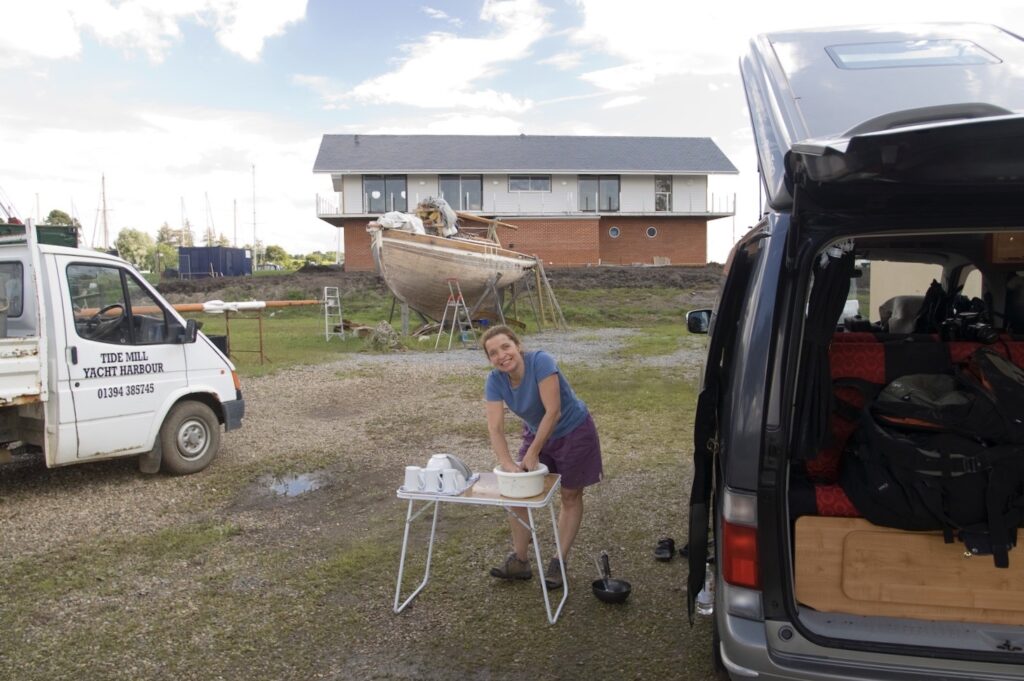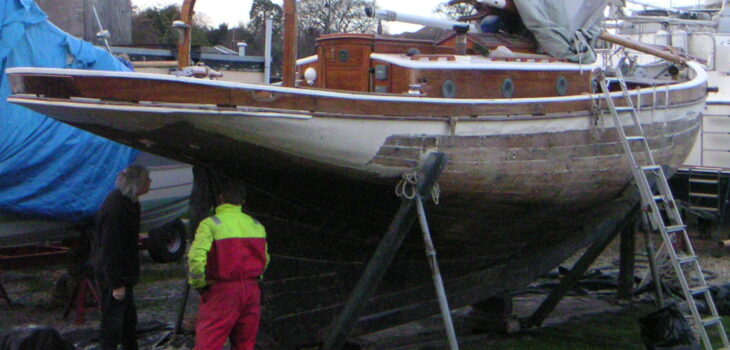 Restoration
Restoration
Assessing the scope of the project, 2007
By April 2007 it became clear that the problems extended far beyond the counter.
We’ll always remember the night Paul phoned to tell us, with some hesitancy in his voice, the bad news as he took more of the rotten wood out: archboard, beam shelf, frames, deck beams and probably worse as we expose more of the hull. She’d been over fastened and many of the nails had caused the wood to delignify, resulting in irreparable rot. Examining the frames more closely showed several appeared to be cracked and in need of replacing or sistering. As more of the planking and interior fittings were removed, it became less and less practical to sleep aboard.
The beam supporting the rear of the coachhouse had sagged, and needed to be jacked up while working out how to repair or replace it without dismantling too much more of the boat. We were hopeful the engine didn’t suffer any side-effects from the sinking, and it seemed to turn over OK. It will need to be lifted out at some point, for a full service and to check the supporting frames and check the mountings.
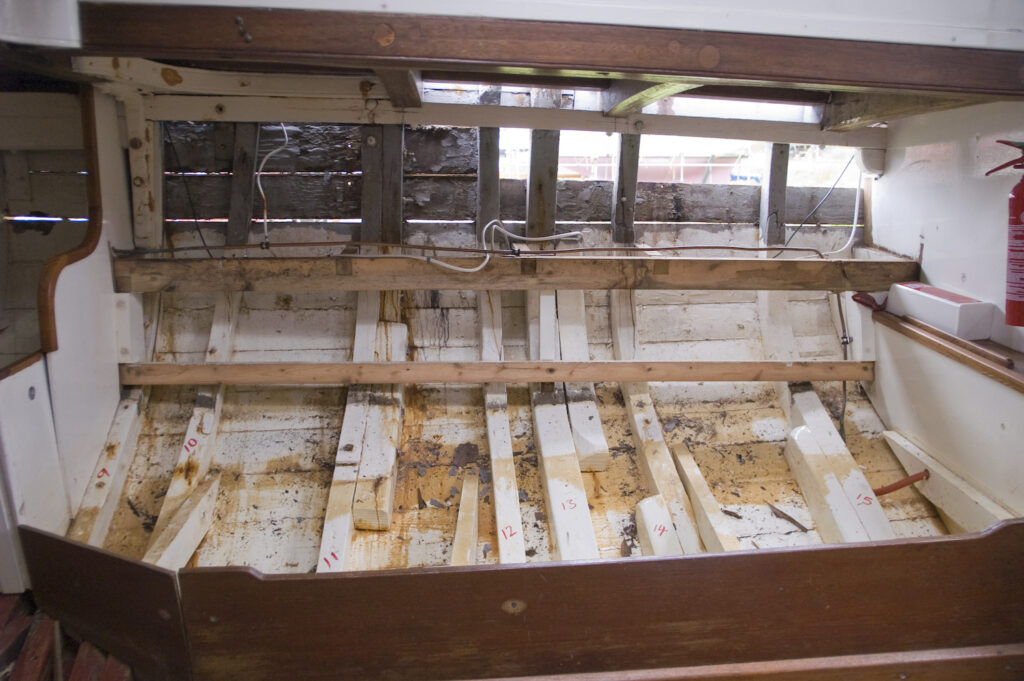
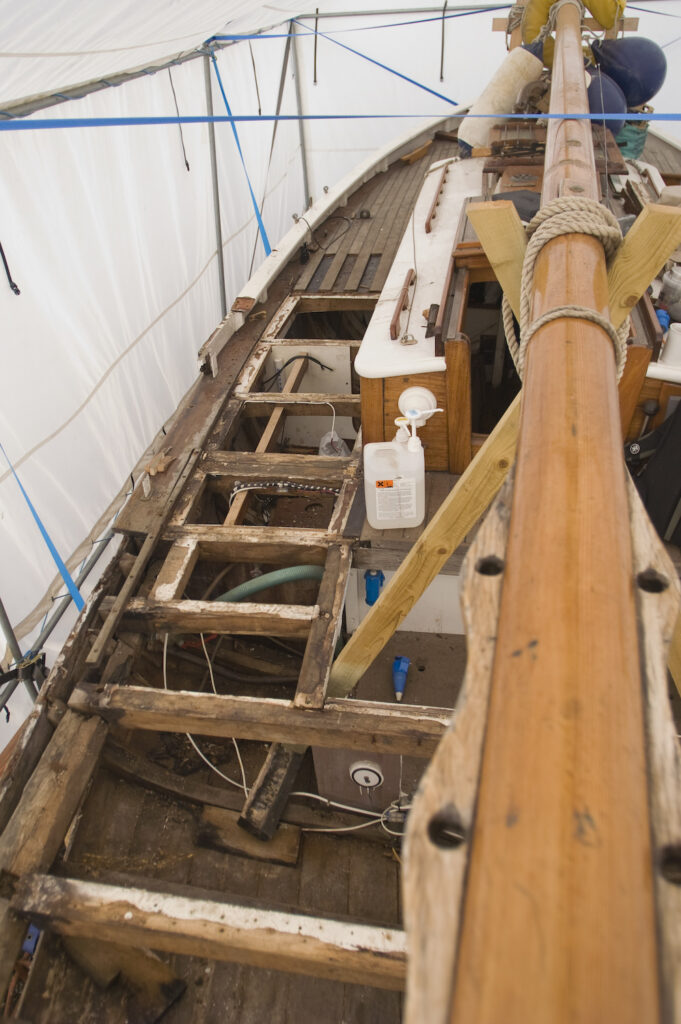
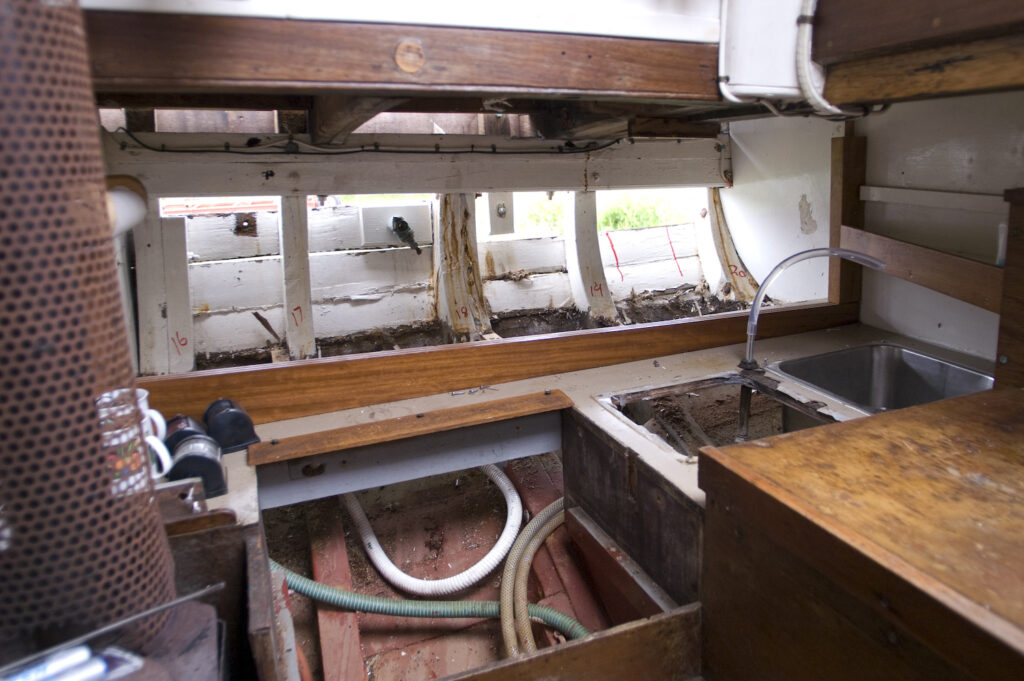
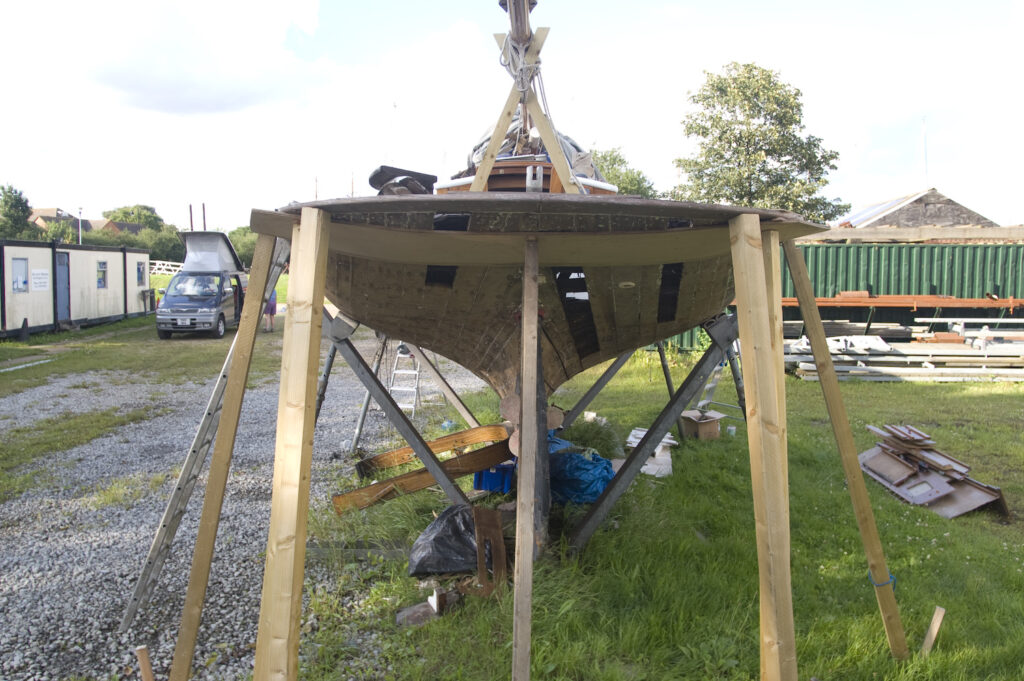

The budget certainly wasn’t going to stretch to B&B. After considerable research, including into purchasing or renting land in Suffolk, or bringing the boat up to the Midlands for restoration, we bought a ten-year old ‘grey import’ Bongo campervan and commissioned a full conversion to be our ‘home from home’ in Suffolk. The conversion wasn’t cheap, but we didn’t want two projects! The covering boards, coaming, boom gallows, bulwarks and cockpit were all removed and carefully piled up to form patterns for the future. The famous counterstern became more and more vulnerable as the real extent of the rotting timbers in the stern emerged. We kept wondering how long it would be before we reached some sound wood.
